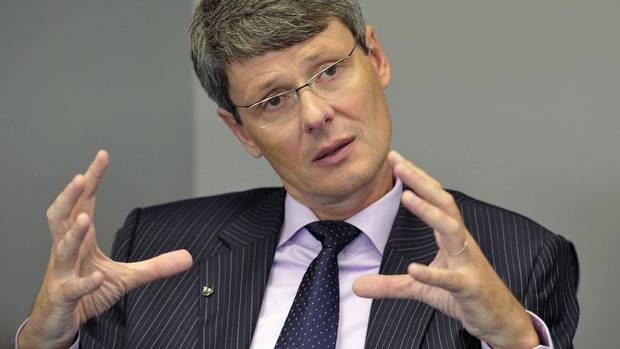From the turnaround success of Telus Corp.'s Darren Entwistle to the fumble of BlackBerry 10 by former CEO Thorsten Heins, here are six leaders who made headlines this year.

Darren Entwistle, Telus Corp.

Edward Burkhardt, Rail World Inc.
Stephen Elop, Nokia Corp.

Thorsten Heins, BlackBerry Ltd.
This was supposed to be the do-or-die year for BlackBerry and its new CEO. BlackBerry is still around, but Heins isn’t: He hit the road in November, when Prem Watsa’s bid for the company morphed into a recapitalization and a re-CEOization, with former Sybase Inc. boss John Chen joining BlackBerry as executive chairman and interim CEO.
Heins leaves with a rich payout (though not as rich as the $55.6-million he could have made if the company had been taken over), but a poor legacy. He made an all-in bet on the company’s new smartphone platform, BlackBerry 10, when he took the helm in early 2012, ditching other strategic initiatives in the belief that a new, more user-friendly smartphone would be BlackBerry’s salvation. It wasn’t. Heins’s decision to launch with an all-touchscreen version instead of one with its trademark keyboard alienated the company’s dwindling fan base. Its marketing campaign was a confusing dud, drowned out by thunderous launches from Apple and Samsung. Core government and business customers continued to move away from BlackBerry to other players. When sales proved to be shockingly bad — even by recent BlackBerry standards — the company put itself up for sale and began hacking costs and jobs.
Perhaps the biggest insult of all: Rogers Communications, one of the firm’s longest-standing partners, decided not to stock the newest BlackBerry 10 phone, the Z30, just months after Rogers CEO Nadir Mohamed appeared alongside Heins at the Canadian launch of an earlier version. Rogers reversed itself after consumers lashed out, but by then the damage was done.
If anything, Heins’s tenure marks the era when BlackBerry lost its way, as well as its last shred of cachet. (Even celebrity spokeswoman Alicia Keys was caught using an iPhone to tweet her support for BlackBerry.) Chen’s first order of business: making up for lost time under the old guy, and proving that BlackBerry has something left to fight for.
Galen G. Weston, Loblaws Cos. Ltd.

Serge Godin, CGI Group Inc.
That all changed after a U.S. subsidiary, CGI Federal Inc., was exposed as the builder and manager of the almost comically glitchy web portal where Americans were to shop for government health coverage under the Affordable Care Act (a.k.a. Obamacare). When the website went live on Oct. 1 — the same day the Republican-led House shut down the U.S. government over that very Act — it was plagued by technical problems. Nine out of 10 individuals attempting to use healthcare.gov initially failed. One CNBC host joked (we hope) a week into the controversy: “Should we immediately go to war with Canada over the CGI thing?” The Tea Party spun the $94-million worth of healthcare.gov-related contracts with CGI — which right-wingers paint as the official IT provider of Canadian socialized medicine — as yet another part of President Barack Obama’s nefarious plan to turn the States into a pinko country like Canada. Was Godin too immersed in integrating his latest, and largest, acquisition — CGI paid $2.7-billion for London-based Logica in 2012 — to worry about a relatively minor U.S. government contract? Whatever the case, we’re betting both Godin and Obama are wishing CGI were once more an unknown quantity stateside.